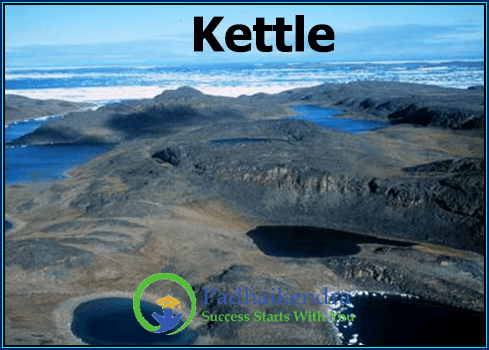A kettle, also known as a kettle hole, is a landform that is created when a block of ice breaks off from a glacier or ice sheet and becomes buried in sediment or soil. As the ice melts, it leaves behind a depression in the landscape that is filled with water, creating a small lake or pond.
Kettles can vary in size from just a few meters to several kilometers in diameter, and they can be found in a variety of landscapes, including valleys, hillsides, and plains. They are most commonly found in areas that were covered by glaciers during the last ice age, including parts of North America, Europe, and Asia.
Kettles can have a significant impact on the landscape and the ecosystems that depend on them. They can provide important habitats for plants and animals, including wetland species such as cattails and frogs. In addition, they can play an important role in water storage and management, as they can collect and store runoff from surrounding areas.
Kettles can also be important geological features, as they can provide clues about past glacial activity and climate change. By studying the sediment and other materials that are found in kettles, scientists can learn more about the history of the landscape and the ways in which it has been shaped by ice and water.
Overall, kettles are an important landform that provide insight into the ways in which glaciers and ice sheets can shape the landscape and impact the environment. They are also important habitats for plants and animals, and they can provide valuable information about the history of the earth’s climate and geology.





